Artists and soldiers drew and painted as members of the Canadian Expeditionary Force during the First World War.
They created art to show current and future generations of Canadians the landscapes, ruins, soldiers and tools of war.
Artists made drawings and sketches of the battlefield, factories and shipyards, as well as training grounds on the home front. Later, in studios in both Canada and England, they created larger works of official art supported by Lord Beaverbrook’s Canadian War Memorials Fund.
Witness – Fields of Battle Through Canadian Eyes is an exhibition that presents a selection of the artwork created through the experience of war — from working sketches to prints and officially commissioned canvases.
The exhibition features more than 100 works from the collections of the Canadian War Museum by 61 artists including Canadian soldiers and celebrated Canadian artists such as A. Y. Jackson, Frederick Varley, Arthur Lismer and Frank Johnston, who later became members of the Group of Seven.
As Canada’s national museum of military history, the Canadian War Museum has an important role to play in marking the centenary of the First World War. The Museum’s exceptional collection of war art offers Canadians a unique means of imagining and reimagining this conflict, and remembering the individuals who fought. Witness encourages Canadians to reflect on the personal and national reach of the First World War.
First Across Canada, Now in France
The travelling exhibition Witness was created in 2014 by the Canadian War Museum in Ottawa.
For the Museum, this exhibition marked the start of activities commemorating the 100th anniversary of the First World War.
Over the past two years Witness has travelled all across Canada and has been seen by thousands of people.
The War Museum is proud to announce that Witness has crossed the Atlantic. The exhibition is now showing at the Musée des beaux-arts in Arras, France, to mark the 100th anniversary of the battles of Vimy and Arras. It will be there until June 11, 2017.
Witness will then return home and resume its Canadian tour, with stops in Sarnia and Markham, Ontario, and in Calgary, Alberta.
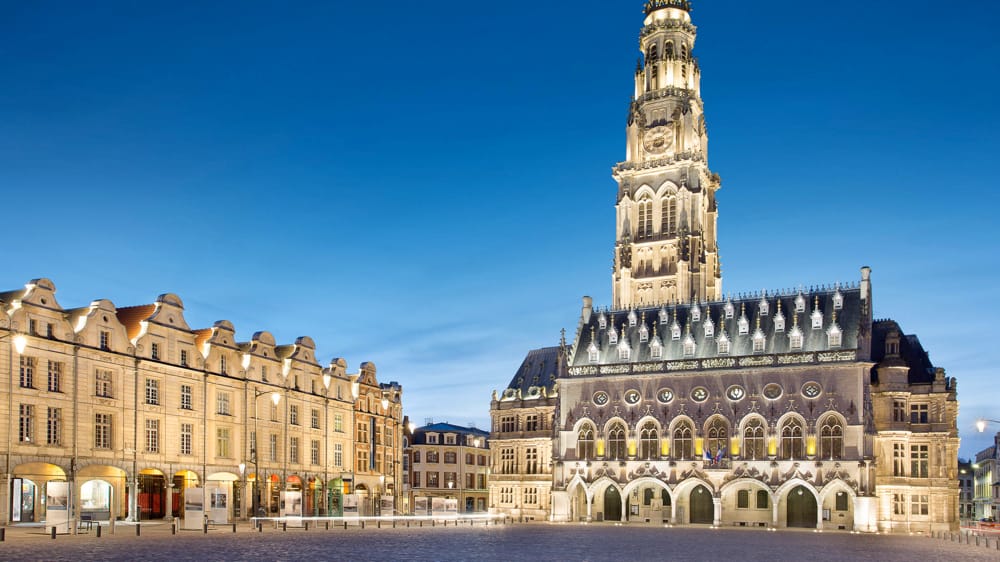
1Canadians At War
Among the many subjects that confronted professional and amateur artists were soldiers overseas and civilians on the home front.
Both official war artists and soldier-artists portrayed Canadian military personnel as brave combatants and as wounded survivors. Notably absent, however, are images that show Canadian soldiers as victims of shell-shock or overwhelming fear.
On the home front, official war artists depicted men and women labouring to produce the ammunition and equipment required by the fighting forces. Munitions factories were one of the few First World War subjects that female artists painted and in which women are featured.
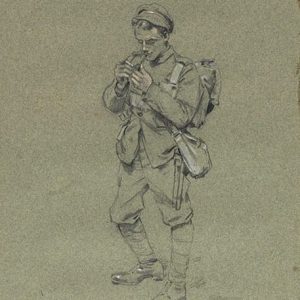 Canadian Soldier Lighting his Pipe (Study for Canadians Arriving on the Rhine)1919, Inglis Sheldon-Williams, Beaverbrook Collection of War Art, Canadian War Museum 19730318-001
Canadian Soldier Lighting his Pipe (Study for Canadians Arriving on the Rhine)1919, Inglis Sheldon-Williams, Beaverbrook Collection of War Art, Canadian War Museum 19730318-001
https://www.warmuseum.ca/collections/artifact/1015476/?media_irn=5405559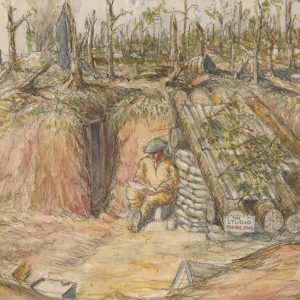 The Artist’s Home at Bottom Wood, about Halfway between Mametz and Contalmaison1916, Thurston Topham, Beaverbrook Collection of War Art, Canadian War Museum 19710261-0732
The Artist’s Home at Bottom Wood, about Halfway between Mametz and Contalmaison1916, Thurston Topham, Beaverbrook Collection of War Art, Canadian War Museum 19710261-0732
https://www.warmuseum.ca/collections/artifact/1015791/?media_irn=5369975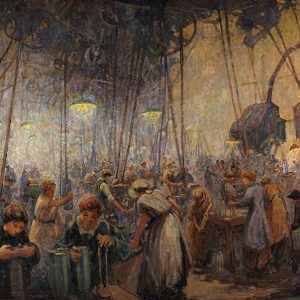 Women Making Shells1919, Mabel May, Beaverbrook Collection of War Art, Canadian War Museum 19710261-0389
Women Making Shells1919, Mabel May, Beaverbrook Collection of War Art, Canadian War Museum 19710261-0389
https://www.warmuseum.ca/collections/artifact/1013596/?media_irn=1078632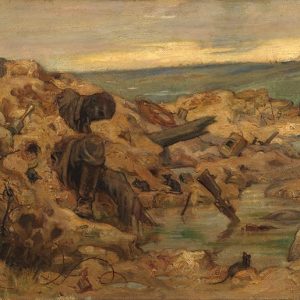 For the Glory of the Kaiserbetween 1917 and 1919, Cyril Barraud, Beaverbrook Collection of War Art, Canadian War Museum 19710261-0020
For the Glory of the Kaiserbetween 1917 and 1919, Cyril Barraud, Beaverbrook Collection of War Art, Canadian War Museum 19710261-0020
https://www.warmuseum.ca/collections/artifact/1016665/?media_irn=5407807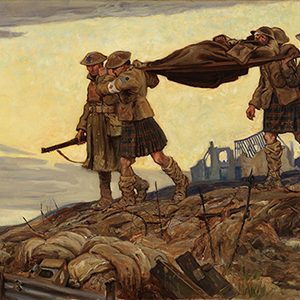 The Stretcher-Bearer Partyaround 1918, Cyril Barraud, Beaverbrook Collection of War Art, Canadian War Museum 19710261-0019
The Stretcher-Bearer Partyaround 1918, Cyril Barraud, Beaverbrook Collection of War Art, Canadian War Museum 19710261-0019
https://www.warmuseum.ca/collections/artifact/1016896/?media_irn=5440276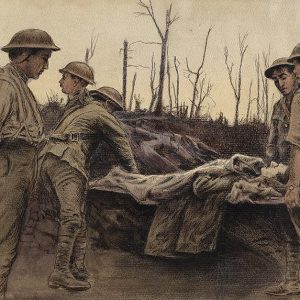 Stretcher Bearers in a Trenchbetween 1915 and 1919, R. G. Mathews, Beaverbrook Collection of War Art, Canadian War Museum 19710261-0833
Stretcher Bearers in a Trenchbetween 1915 and 1919, R. G. Mathews, Beaverbrook Collection of War Art, Canadian War Museum 19710261-0833
https://www.warmuseum.ca/collections/artifact/1014329/?media_irn=2379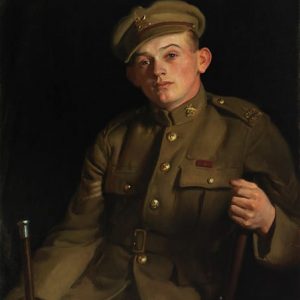 Sergeant T. W. Holmes, V.C.around 1918, Ernest Fosbery, Beaverbrook Collection of War Art, Canadian War Museum 19710261-0148
Sergeant T. W. Holmes, V.C.around 1918, Ernest Fosbery, Beaverbrook Collection of War Art, Canadian War Museum 19710261-0148
https://www.warmuseum.ca/collections/artifact/1016503/?media_irn=5387441
2Tools of War
During the First World War, Allied and German forces manufactured and employed a vast array of equipment. Some technologies, like aircraft and tanks, were new. Others, like artillery and machine guns, were altered to increase their lethality. Paradoxically, both forces also required traditional equipment, such as horses and other pack animals, because mud, craters and other obstacles defeated the mechanized vehicles.
Officially commissioned artists and soldier artists saw this equipment in production on the home front, in action overseas, or in ruins, its remains littering battlefields. They struggled to depict the War. Sometimes, accuracy was the priority. At other times, they chose to interpret what was before them to communicate a particular message about the war.
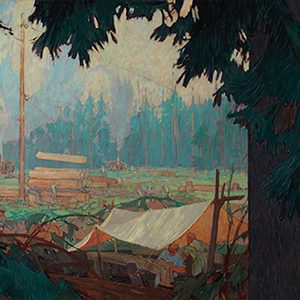 Lumbering Aeroplane Spruce in B.C.1919, Charles Simpson, Beaverbrook Collection of War Art, Canadian War Museum 19710261-0661
Lumbering Aeroplane Spruce in B.C.1919, Charles Simpson, Beaverbrook Collection of War Art, Canadian War Museum 19710261-0661
https://www.warmuseum.ca/collections/artifact/1016011/?media_irn=5404378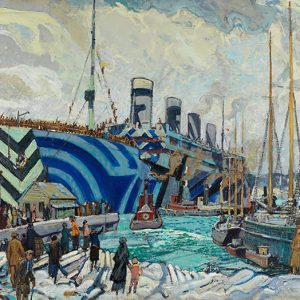 Olympic with Returned Soldiers1919, Arthur Lismer, Beaverbrook Collection of War Art, Canadian War Museum 19710261-0343
Olympic with Returned Soldiers1919, Arthur Lismer, Beaverbrook Collection of War Art, Canadian War Museum 19710261-0343
https://www.warmuseum.ca/collections/artifact/1013868/?media_irn=10786241919, Arthur Lismer, Beaverbrook Collection of War Art, Canadian War Museum 19710261-0343
https://www.warmuseum.ca/collections/artifact/1013868/?media_irn=1078624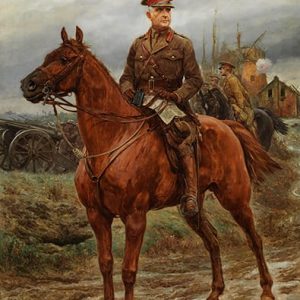 Portrait of Sir Sam Hughesaround 1915, R. Caton Woodville, Beaverbrook Collection of War Art, Canadian War Museum 19900155-001
Portrait of Sir Sam Hughesaround 1915, R. Caton Woodville, Beaverbrook Collection of War Art, Canadian War Museum 19900155-001
https://www.warmuseum.ca/collections/artifact/1027362/?media_irn=5404379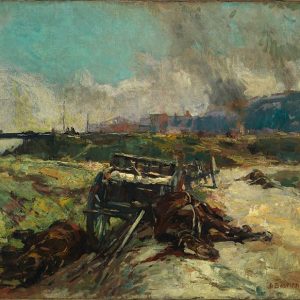 Artillery Horse Killed1918, Alfred Bastien, Beaverbrook Collection of War Art, Canadian War Museum 19710261-0094
Artillery Horse Killed1918, Alfred Bastien, Beaverbrook Collection of War Art, Canadian War Museum 19710261-0094
https://www.warmuseum.ca/collections/artifact/1016681/?media_irn=3125175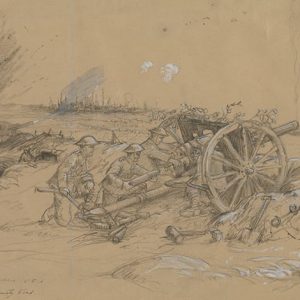 18-Pounders Pushed Up in the Open During an Attackbetween 1916 and 1919, Thurston Topham, Beaverbrook Collection of War Art, Canadian War Museum 19710261-0756
18-Pounders Pushed Up in the Open During an Attackbetween 1916 and 1919, Thurston Topham, Beaverbrook Collection of War Art, Canadian War Museum 19710261-0756
https://www.warmuseum.ca/collections/artifact/1015814/?media_irn=5369997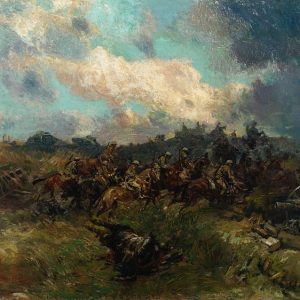 Cavalry and Tanks at Arras1918, Alfred Bastien, Beaverbrook Collection of War Art, Canadian War Museum 19710261-0090
Cavalry and Tanks at Arras1918, Alfred Bastien, Beaverbrook Collection of War Art, Canadian War Museum 19710261-0090
https://www.warmuseum.ca/collections/artifact/1016679/?media_irn=5433436
3Landscapes of War
Landscapes dominate Canadian art, so it is no surprise that First World War soldiers and artists painted battlefields.
Depictions of the French and Belgian countryside, where Canadians had fought, are illuminated by shellfire, enveloped in smoke, torn up by craters and trenches, and peopled by fighting soldiers.
Artists shared their impressions with those at home through public exhibitions and through personal letters. They exposed Canadians to the conditions soldiers faced, and highlighted their bravery and common purpose on the battlefield. To a large degree, artists omitted the more gruesome realities of war. A hundred years ago, blasted trees and, in some cases, poppy fields symbolized war’s human cost.
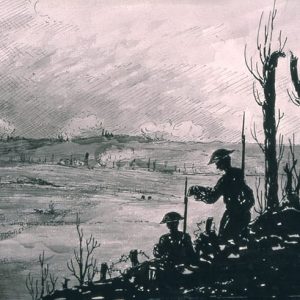 Night Patrol Checking Map (Lens Area ?)(date unknown), George Sharp, Beaverbrook Collection of War Art, Canadian War Museum 19730157-013
Night Patrol Checking Map (Lens Area ?)(date unknown), George Sharp, Beaverbrook Collection of War Art, Canadian War Museum 19730157-013
https://www.warmuseum.ca/collections/artifact/1015470/?media_irn=33027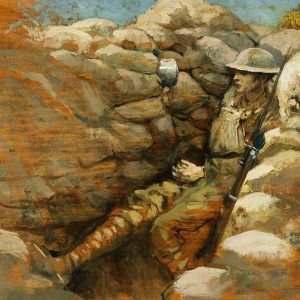 Outpost, Neuville-Vitassearound 1918, Alfred Bastien, Beaverbrook Collection of War Art, Canadian War Museum 19710261-0060
Outpost, Neuville-Vitassearound 1918, Alfred Bastien, Beaverbrook Collection of War Art, Canadian War Museum 19710261-0060
https://www.warmuseum.ca/collections/artifact/1021617/?media_irn=3125143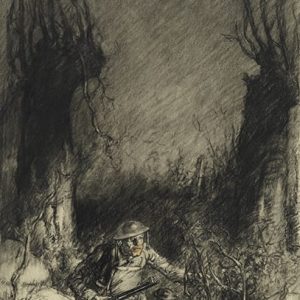 The Scoutbetween 1918 and 1919, Harold Mowat, Beaverbrook Collection of War Art, Canadian War Museum 19710261-0440
The Scoutbetween 1918 and 1919, Harold Mowat, Beaverbrook Collection of War Art, Canadian War Museum 19710261-0440
https://www.warmuseum.ca/collections/artifact/1014165/?media_irn=37731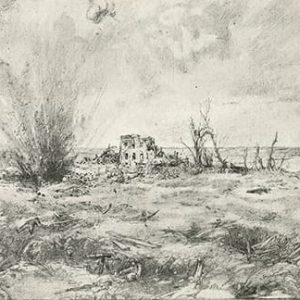 After Courcelettearound 1916, Harold Brett, Beaverbrook Collection of War Art, Canadian War Museum 19640037-047
After Courcelettearound 1916, Harold Brett, Beaverbrook Collection of War Art, Canadian War Museum 19640037-047
https://www.warmuseum.ca/collections/artifact/1019425/?media_irn=5370260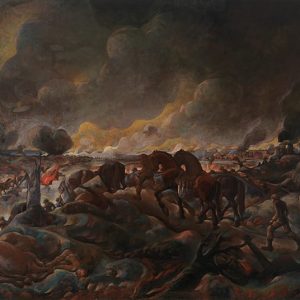 Mud Road to Passchendaelearound 1917, Douglas Culham, Beaverbrook Collection of War Art, Canadian War Museum 19890222-001
Mud Road to Passchendaelearound 1917, Douglas Culham, Beaverbrook Collection of War Art, Canadian War Museum 19890222-001
https://www.warmuseum.ca/collections/artifact/1025857/?media_irn=5404374
4Ruins of War
War artists, officially commissioned professionals and soldiers alike, depicted war’s impact on homes, villages, towns and churches. Some also painted the abandoned French châteaux in which they were billeted.
Artists seemed to see a tragic beauty in the devastation they encountered. For many, ruined buildings symbolized war’s ravages on human beings and represented the dead they rarely painted.
One hundred years later, the reluctance of artists to depict human carnage may seem overly cautious, but most had no desire to shock. Their respect for family, friends and dead comrades conditioned their work. Depicting destroyed buildings was a gentler means of conveying to private and public audiences the enormous human cost of war.
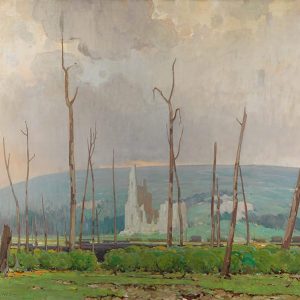 Ablain-Saint-Nazaire1918, William Beatty, Beaverbrook Collection of War Art, Canadian War Museum 19710261-0100
Ablain-Saint-Nazaire1918, William Beatty, Beaverbrook Collection of War Art, Canadian War Museum 19710261-0100
https://www.warmuseum.ca/collections/artifact/1013561/?media_irn=5407794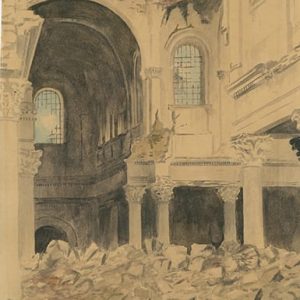 Arras Cathedral(date unknown), Henry Crumplin, Beaverbrook Collection of War Art, Canadian War Museum 19840499-012
Arras Cathedral(date unknown), Henry Crumplin, Beaverbrook Collection of War Art, Canadian War Museum 19840499-012
https://www.warmuseum.ca/collections/artifact/1022036/?media_irn=31149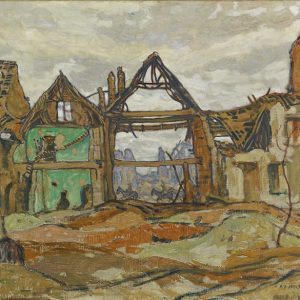 Houses of Ypres1917, A. Y. Jackson, Beaverbrook Collection of War Art, Canadian War Museum 19710261-0189
Houses of Ypres1917, A. Y. Jackson, Beaverbrook Collection of War Art, Canadian War Museum 19710261-0189
https://www.warmuseum.ca/collections/artifact/1013626/?media_irn=5406541
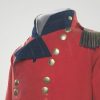
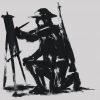 Travelling Exhibition
Travelling Exhibition